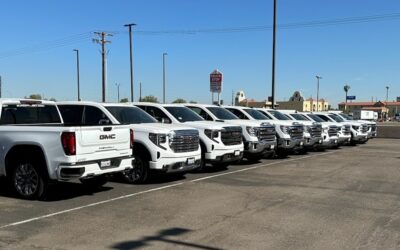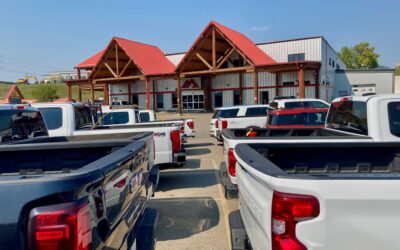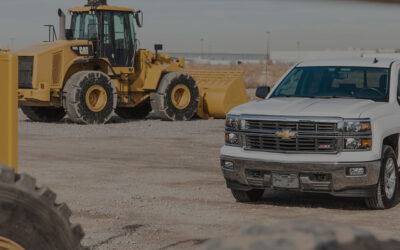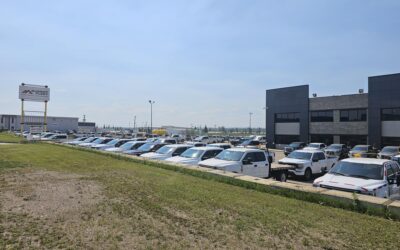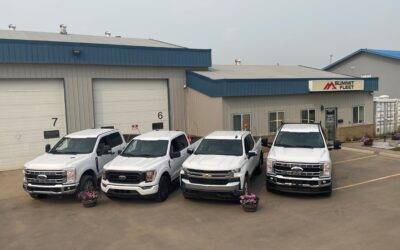Spec’ing a Truck the Correct Way
Spec’ing is the process of evaluating the project you’re working on and ensuring that the vehicle you rent/own is right for the job. If a vehicle not up for the job is used, it can lead to loss of money out of your pocket but also a loss of time that could be used elsewhere. In this blog, it will be discussed why this process is necessary, how to make sure you have the right fleet vehicle for the job at hand, and the most common mistakes to avoid.
Why is Spec’ing a Truck Important?
Vehicles are not all made equal and no fleet truck is the same. If your vehicle is not up for the challenge it can lead to excessive wear and tear, higher maintenance costs and poor fuel economy. If you’re towing a piece of heavy equipment from a worksite that’s 10,000 lbs., you wouldn’t want to pick a standard pickup that can only pull up to 7,000 lbs. It’s important that facts are checked so the right vehicles are provided for you and your projects.
There can be thousands of truck configurations. It’s important to know what the truck is going to be used for before you decide on what vehicles are needed. How long is the fleet truck? How much towing power will I need to get the work done? Can my truck get to the remote work place? Will I need to tow more later? These are just a few questions that you’ll want to ask yourself when spec’ing a truck for your fleet.
Steps to Spec’ing a Truck:
Step 1: Understand the Application
A very important question to ask yourself is “What will be the work function of the truck?” Make sure you understand the day-to-day applications, so you can ensure that this is the right vehicle for your project. Does the job need towing capability? If so, how much?
Another powerful tool is talking to drivers who operate the vehicles. They may mention issues you weren’t aware of and could make recommendations on what would work better. Perhaps the trucks in your fleet don’t have enough tool storage space or the workers may notice it’s difficult to get in and out of the truck. You’ll want to take these details into account when deciding on what will work best for you.
Step 2: Understand the Operating Parameters
This step is when you address factors such as operating factors like harsh weather, idle times, maintenance requirements, etc. Another example of this is if you know that you’re going to be going long distances in your truck, then you may want to select a diesel chassis.
Step 3: Select the Chassis
Selecting a chassis is an important part of spec’ing a truck. When selecting this, you should work closely with the provider to go over details in the vehicle’s required payload and necessary chassis dimension. These should also be considered during this stage:
- Maximum Payload – This refers to the amount of weight a vehicle can safely carry.
- Gross Axle Weight Rating – This is the maximum distributed wright that can be supported by an axle of a vehicle.
- Maintenance and Warranty Repair Accessibility – You’ll want to make sure that you have a place you can go to for repairs of your vehicles.
- Weight/Reporting Regulations
- >10,000 lbs. require DOT registration.
- >26,000 lbs. require CDL registration.
- HAZMAT Laws – This is when you confirm if your cargo falls under the rules of governing hazardous materials. If you do, you’ll want to make sure you’re following the law.
Step 4: Select the Powertrain
The powertrain consists of wheels and tires, transmission, rear axle and driveline. Here are some components that are looked at during this stage of spec’ing a truck.
- Operating altitudes and temperatures- Driving in extreme heat/cold does a lot to a vehicle. You’ll want to select a powertrain for that kind of weather.
- Vehicle configuration- Number of drive tires and axles.
- Driving surfaces- Are you going to be driving mostly off road during your trip or more highway?
Step 5: Select the Body
This is another time you’ll want to work closely with the provider to make sure the body selected is what is needed for the job. These considerations are:
- Payload type and volume- What materials are you moving? Volume and weight is important when determining a body for a vehicle.
- Loading and unloading requirements and methods- How will you be loading and unloading your cargo? Are you going to use a ramp? These are good questions, so you don’t find out too late that you can’t unload effectively.
- Cargo restraint system- How is your cargo going to be secured while in transport.
Here are Some Dimensions that should be Measured When Spec’ing a Truck:
WB= Wheelbase
BA= Bumper to Axle
AF= Axle to End of Frame
BBC= Bumper to Back of Cab
OAL= Overall Length
LA= Load to Axle
CA= Cab to Axle
CB= Cab to Body
CE= Cab to End of Frame
FH= Frame Height
Common Mistakes to Avoid:
- Under Spec’ing a Truck- This is a common error made during spec’ing. It usually happens when a company does not consider additional equipment needs. This can increase cost for maintenance repairs.
- Over Spec’ing a Truck- This can increase upfront capital costs with features that aren’t really needed. Over spec’ing is a lot better than under spec’ing, but most of the time your fleet vehicle doesn’t need everything offered.
- Not Understanding the Applications- This simply means the vehicle being used is not the right fit for that purpose. This mistake ultimately leads to higher maintenance costs as well.
- Ordering Last Year’s Truck– Needs change all the time. Confirm first that nothing has changed, before you use the same vehicle.
- Chassis Misapplied- Maintenance problems happen if a chassis built for highways is used off road. Make sure you’re using the correct chassis for the job at hand.
- Not Doing Your Research- You want to get the job done and fast. Many mistakes happen when a vehicle is bought to simply fill a need quickly but is not researched. It may be good now to have a vehicle but down the line, it will most likely cost you money. Taking the extra steps can save you lots of money and time.
Summit Fleet understands you have important work to do. The last thing you want to worry about during a project is your transportation. Follow these guidelines and make sure your next job goes seamlessly.
Sources:
https://www.businessfleet.com/article/story/2003/01/five-steps-to-properly-specing-a-truck.aspx
https://www.somervillehino.com/hino-blog/2015/08/04/5-fundamentals-to-truck-specing
